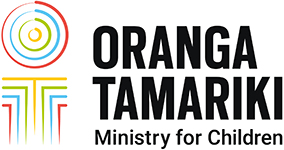I’ve been a Corrections Officer for four years, working at Northland Region Corrections Facility. I’ve also been an amateur quilter for about 15 years. In April, I took over supervision of the sewing /tailoring room, set up to give the younger prisoners new skills and promote a good work ethic, which will give them better job opportunities on release. We have several industrial sewing machines and overlockers.
The prisoners have made rain ponchos for prison work parties and have been making 1300 schoolbook bags for a charity. They have made netball skirts for a local school and also learned how to make their own clothes.
 The men really enjoyed coming to the sewing room but said some of their work was very repetitive. I asked if they would like to try patchwork and quilting. Their first response was to laugh but after seeing some of my quilts, two of them said they would like to give it a go.
The men really enjoyed coming to the sewing room but said some of their work was very repetitive. I asked if they would like to try patchwork and quilting. Their first response was to laugh but after seeing some of my quilts, two of them said they would like to give it a go.
One wanted to make a “bugs in jars” quilt. I suggested that maybe he should start with something a little easier but he insisted that was what he wanted.
I sought permission from management to bring in my cutter, cutting board and ruler, and brought in fabrics from my own stash.
The prisoner was enthusiastic when choosing fabrics. He asked the other prisoners what they thought of the colours and layout. The quilt was pieced together on the industrial machines, as there was no way he was going to hand-stitch.
His way was better
When we got to the quilting, also done on the industrial machine, I told him to start from the middle and work out. But he knew better and started from the end and worked up. I asked why he hadn’t followed my instructions and he said he would do it his way as it was better.
When he finished he asked me why it was all puckered up at one end. I asked, “Why do you think that happened?”
“Because I did it my way, not the way you told me,” he replied.
He became frustrated when I suggested he unpick and start again, and refused. I told him to take a break and have a cup of tea. Next thing, I saw him unpicking. When he got to binding his quilt I suggested he hand-stitch.
Unpicking and redoing
He said after half-an-hour of stitching he could understand why old ladies do hand-stitching as it was very relaxing and he had not worried over his pending release, which was really stressing him. After lots of unpicking and redoing the finished quilt looks very good.
The other prisoner made a simple block design.
I was given contact details for Mary Ann, a volunteer quilter at Auckland Region Women’s Corrections Facility. Mary Ann has been so supportive, even driving up with her husband and several other volunteers. They brought donations of fabrics, rulers, quilting frames, pins, needles, magazines and even a domestic sewing machine.
Hand-quilting a design
They also brought samples of work they do with ARWCF prisoners and talked to the men about quilting and designs. The prisoners were very impressed, and the next day the second prisoner asked if he could hand-quilt a design into his quilt. He did a couple of freehand designs and did a lovely job of quilting them.
 I let the prisoners make their first quilt for themselves or for a family member, as they don’t always wait for instructions and just carry on doing it their own way – usually ending up having to unpick. The second quilt they make is usually better and this is donated to either Women’s Refuge or one of our three local hospitals: Kaitaia, Bay of Islands or Rawene.
I let the prisoners make their first quilt for themselves or for a family member, as they don’t always wait for instructions and just carry on doing it their own way – usually ending up having to unpick. The second quilt they make is usually better and this is donated to either Women’s Refuge or one of our three local hospitals: Kaitaia, Bay of Islands or Rawene.
The prisoner who made the “bug rug” said he would like to try hand-stitching another quilt. I sought and was granted approval from management for him to do the stitching in his cell during lock up hours. The staff in the unit said his behaviour had greatly improved since he started quilting.
Teaching sewing skills to the prisoners keeps idle hands busy. However, it also gives me the opportunity to talk through poor past choices in life that have led the men to prison in the first place. I’m able to suggest new strategies to try and help them deal with their anger and frustrations.
I have now got approval for more prisoners to do hand-stitching in their cells, which they know is a privilege and only offered to those who have earned this trust.
Many prisoners have poor numeracy and literacy skills, and get taught by our tutors. I thought they would be interested to look at the pictures in the donated quilting magazines. But the prisoners tell me about articles they have read or ask me what particular words mean.
By doing the quilting, which is often seen as a feminine activity, and having their peers queuing up to join, it’s shown them they don’t need to act all macho.
Vowed to continue quilting
Prisoner one, who has now been released, has vowed he will continue to quilt as he really enjoyed it.
Prisoner two has told his partner he will get a sewing machine as he wants to make clothes for himself and his family, and would like to continue quilting.
We still do the industrial sewing every morning and quilting in the afternoon.
All the men in the sewing room are now at different stages of quilt-making and there is a waiting list of prisoners wanting to attend. I am very lucky to have a qualified quilting volunteer, Jan Main, who comes in one afternoon a week to assist.
This article first appeared in issue 88 of New Zealand Quilter
LATEST POSTS
- Whakawhanaungatanga at the heart of everything
- Moe moe ra, to matou kaumātua aroha nui
- Keeping your Arts in Corrections programme on track
- Te Ora Auaha timely, says Minister
- Workshops realise youth potential
- Protecting your organisation for future generations
- Acknowledging milestones
- Queen for a day at Arohata Prison
- Prison events showcase creative talents
- Biting off more than we can chew




